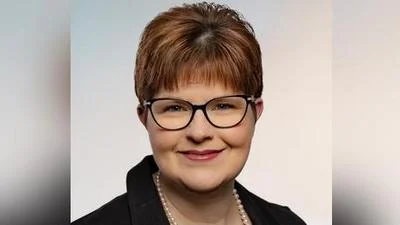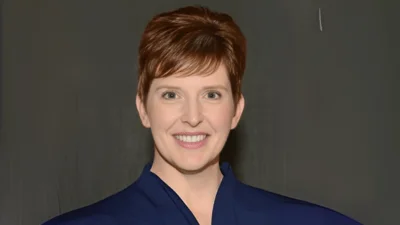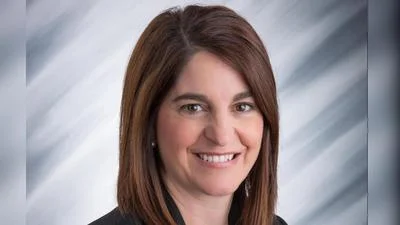Cambridge Chronicle recently issued the following announcement.
Christine Ackerman, the superintendent of the Chappaqua school district in New York, always knew she wanted to be a school administrator and actively pursued that goal.
She earned a Ph.D. in educational leadership at age 24.
By 36, she got her first job as a school superintendent. Now 42, she is the youngest and the most highly compensated female school superintendent in the region.
She’s also something of a rarity.
About 76% of the nation’s K-12 educators are women. Yet, when it comes to school superintendents – the school district’s CEO – only 24% are women, according to federal data and a survey conducted by AASA, the association of the nation’s public school superintendents.
So in a field where three-fourths of the potential candidate pool is women, what’s holding women back from the top job?
One of the most common explanation is that women simply are not applying for the high-pressure but highly compensated job.
But why?
There are a host of issues: Unconscious bias on the part of those who make hiring decisions, a lack of a strong candidate pipeline, and a paucity of female role models and networking opportunities surface as reasons for the gender imbalance, say experts and female superintendents.
“We’re looking for the best people possible to be superintendents. And right now, a lot of the best people are choosing not even to apply,” said Charles Dedrick, the executive director of NYCOSS, the New York Council of School Superintendents.
“We have to get those best people to start thinking about the superintendency as a career option. But we also need to be working with school boards and other administrators, too. This is a big effort.”
The job path is not an easy one. Ackerman made eight job moves, including roles as principal and assistant superintendent, before she was appointed the superintendent of the Greenwood Lake school district at age 36.
It’s those roles as principal, particularly in the middle and high schools, that most often lead to a superintendency, and that’s where women are most lacking.
In public schools nationally, women make up 54.2% of principals, according to a 2019 fact sheet from the AFL-CIO’s Department for Professional Employees.
Close to 68 percent of elementary school principals are women, while men make up 67.3% of high school principals and 60% of middle school principals.
That is a key division in the field: According to a 2015 report by NYCOSS, 81% of new superintendents came from either a middle/high school principalship or elsewhere in the district office.
Finding top talent
In 2016, AASA launched an initiative, backed by a $450,000 grant from the Bill & Melinda Gates Foundation, to help women reach the superintendency earlier in their careers and persist once they are on the job. It addressed the major challenges women face in aspiring to the superintendent position and spotlights the leadership journey of those who have already made it to the top job.
Jacinda Conboy, leader of the Women’s Initiative at the New York State Council of School Superintendents (NYCOSS), said they have been trying to increase the number of applicants in the state by influencing how the positions are advertised.
Conboy pointed to a Hewlett Packard study that says men will apply for a position if they meet 60% of the qualifications, while women will apply for a position when they meet 100% of the qualifications.
“If you advertise your job and you’ve got 20 bulleted qualifications for the job, women will go down the list and meet 19 of the qualifications, but not the 20th, and they probably won’t apply for that job,” Conboy said. “It also comes from what society is telling them: You have to be better, work harder, be more qualified than the men are. You’re not going to get the job.”
The effort is moving the needle slightly, said Dedrick, the executive director of NYCOSS. For instance, 36% of superintendents with one year or less experience are women, compared to 30% overall for the five years preceding.
Mary Jean Marsico, a former New York superintendent who now serves as COO of Rockland BOCES, said she’s interviewed for several superintendent positions and that the experience has been “eye-opening.”
“It mirrors what happens when women are interviewed for leadership positions in business or when they stand for elections. We’re seen as passionate but also at times as emotional,” said Marsico. “But emotionality for a man is seen as a strength. It’s seen as decisive and strategic.”
Tahira Dupree-Chase, superintendent of the New York’s Greenburgh school district, agrees that the one stereotype she has faced in her position is being perceived as “emotional.”
“There was a time when I had to make huge decisions on personnel matters and I was accused of making those decisions based on emotions, not facts,” said Chase, who began her career as a substitute teacher in the Bronx. “And I believe that had I been a man making that decision, it may have been perceived as, ‘Wow, that’s a strong leader.’”
She has combated that bias by being consistent.
“I don’t shy away from making hard decisions. The minute I shy away from making hard decisions and I become inconsistent, then I’m feeding into the notion that it was based on emotion,” said Chase. “But if I continue to follow the district policy, follow the law, and stay consistent, it demonstrates that I make my decisions based on facts. No matter how hard those decisions are.”
Gender still plays a role
Debbie Raizes has been a recruiter for Hazard, Young, Attea and Associates, a nationwide superintendent search firm, for 20 years. She previously served as a school board member in Scarsdale.
Raizes said that she has been asked by school board members whether female candidates can handle the demands of a superintendent’s job.
“Will she have the time to be a superintendent? She’s younger. What’s she going to do about her children?” said Raizes. “And my response to that is, you would never ask that question about a man. You should think about whether they are the right fit. You can’t decide for them if they have the time to be a superintendent because they are women.”
Renee Gargano felt a similar bias back in 1988, when at five months pregnant she was asked by her boss to skip a monthly meeting with other superintendents – mostly male – due to her expanding belly. Gargano at the time was the assistant superintendent of Putnam-Northern Westchester BOCES.
She doesn’t believe her boss was ill-intentioned. After all, he promoted her, making her the first woman to occupy the post. “It was the atmosphere of the times,” said Gargano. “It was the stone ages.”
While that scenario is less likely in 2020, the gender gap continues.
A 2013 Pew Research Center survey found that, among parents with at least some work experience, mothers with children under age 18 were about three times as likely as fathers to say that being a working parent made it harder for them to advance in their job or career.
While Ackerman doesn’t think she’s unique – “I’m a single mom superintendent. I don’t think I’m an anomaly” – there is no side-stepping the fact that long-held gender roles factor into some women’s decisions on pursuing a job with long hours. A 2015 survey conducted by the New York Council of School Superintendents found that women superintendents were much less likely to have school-aged children than men (15% vs. 50%).
But the tide is changing as far as women being able to build their resumé sooner, said Laurie Bandlow, who became superintendent of New York’s Brewster school district in 2019.
Bandlow began her career as a sixth-grade teacher in 1985. As she progressed through various roles, including vice-principal and principalships in elementary and middle schools, she said she always had to take her family into account.
She took a year-and-a-half leave as a new mom while working as a vice principal.
“So it’s kind of pushed our careers back little bit,” she said. “But over the last 10 years, I’m noticing that male teachers are staying home to help raise the kids. I think that the tide is going to change.”
Representation at the top is key
Representation at the top matters, because superintendents make hiring decisions for leadership positions and have the power to ensure that there’s a robust pipeline of future superintendent candidates.
“Both in education and in the business world, there’s a boys club,” said Daniel A. Domenech, executive director of the AASA, the association of the nation’s public school superintendents. “The males that tend to be in the hiring position often make the decision in the favor of another male.”
Lisa Brady, the superintendent of the Dobbs Ferry school district in New York, understands this often unconscious bias. She believed she needed a doctorate to compete for a top job.
“I knew as a woman, I had to be differently prepared,” she said.
Brady had been a health teacher for seven years in Trenton, New Jersey, when her mother suggested she consider administration. She rose through the ranks in New Jersey before getting the top job in Dobbs Ferry in 2011.
“Even as a principal, I had begun to realize that being a superintendent was something that I could do and I thought I would be good at it,” she said. “That was my mother’s mantra: Even if you don’t do it, be prepared.”
As a superintendent, Brady said she can affect change. “I realized that the opportunity to affect the system was an important job,” she said.
The need for mentors
One key for potential female administrators is to have strong female role models and mentors in top positions.
“Mentoring ladies to make sure that they have a crystal clear mission and vision of how they want to serve is important,” said Deborah Wortham, superintendent of schools in New York’s East Ramapo, where 13 of the district’s 14 schools have female principals.
Wortham said she makes it a goal to mentor other women, guided in part, by advice from her late sister: “When you are determined to be the best that you can be, you will continue to seek, to support and to serve others.”
Wortham served as an elementary, middle school and high school principal before taking up positions as superintendent in Long Island and York, Pennsylvania.
Ackerman was mentored by Diane Ramos-Kelly, a former superintendent.
“I watched her deal with some very difficult situations and I learned a lot from how she handled that,” Ackerman said.
Dupree-Chase said she benefited from joining professional organizations and networking.
“Training programs such as the ones run by NYCOSS give women a lot of support including mentorship and opportunity to collaborate with others,” Chase said. “They might be moms, wives, caregivers. Many of us are in that sandwich age where we’re caring for our parents and caring for our own families. And it gives us that support system that didn’t necessarily exist years ago.”
Taking on leadership roles early is also key to ensuring there are more female educators in top jobs, said Mary Fox-Alter, superintendent of the Pleasantville school district in New York and a former president of the Lower Hudson Council of School Superintendents.
Her advice for aspiring female superintendents?
“Volunteer and step forward in terms of district level initiatives that will give you exposure to governance, finance and policy issues,” she said. “Attend public board of education meetings and local conferences and workshops and just keep learning and expose yourself to all the different facets of education.”
Power in the pocketbook
By not pursuing leadership positions, women pay an economic price as well.
Vicky Tipp, president of the New York’s Westchester Putnam School Boards Association, said she’s never participated in state-level discussions about reaching gender parity at the top.
“I think that when there are disparities, it’s always important to acknowledge them and look at what the factors might be that are causing these gaps,” Tipp said.
For Renee Gargano, who helped create a doctoral program in educational leadership at Manhattanville College in 2010, things are looking up.
The first cohort were a group of 12: six men and six women.
Today, the breakdown is 40 men and 93, or 70%, are women.
“The women are certainly turning out,” said Gargano. “It makes me very happy.”
Ackerman seconds that emotion, echoing that she’s not an anomaly: “There are a lot of women out there that can do these jobs and do them very well.”
Reach reporter Swapna Venugopal Ramaswamy via email at svenugop@lohud.com
Original source can be found here.






 Alerts Sign-up
Alerts Sign-up